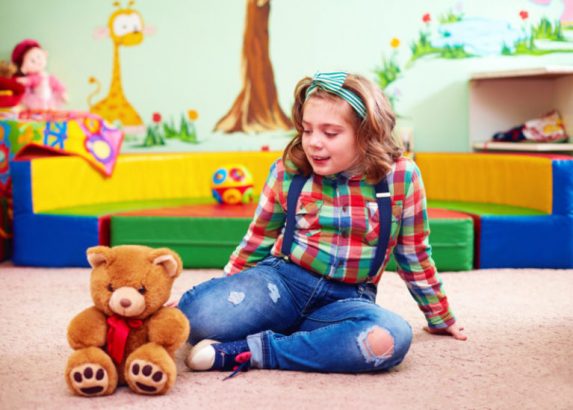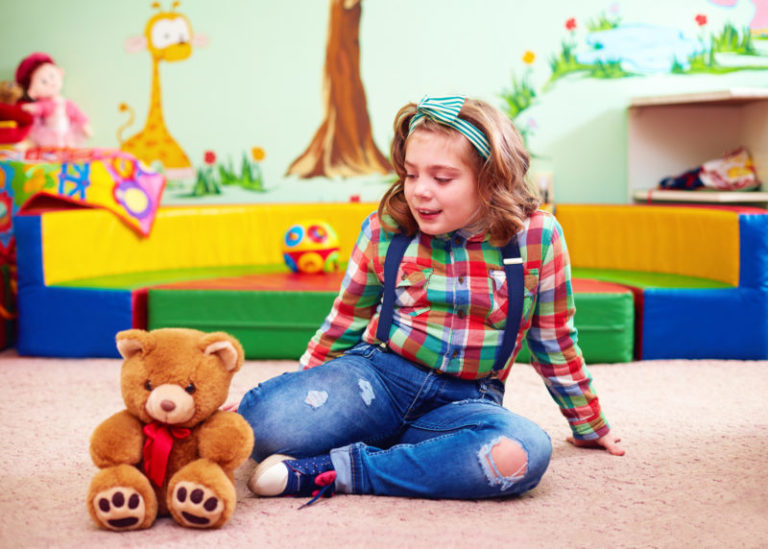A note on language: At Mable, we use ‘identity-first’ language when referring to autism and autistic people. We’ve made this decision based on feedback from our community. We understand different people have different preferences, and we recognise and respect every individual’s right to choose how their identity is described.
Recently, we reported on the launch of new sensory rooms at St Kilda Stadium, as the club joined a growing list of venues to cater to fans with sensory processing issues. Awareness of the needs of people with sensory processing issues is growing, with attractions, retail stores and entertainment venues around the country introducing tailored sessions.
If you’re a parent of an autistic child, you might be wondering whether there are things you can do in your own home to create a space for your child that’s fun and responsive to their sensory processing needs. Particularly if your family has recently received a diagnosis, it can be daunting to know where to begin. Here are 6 top tips from the experts about how to get started creating the perfect sensory-friendly bedroom for your child.
1. Remember, there’s no one-size-fits-all
To start, think about what your child responds to (negatively or positively) when it comes to sensory stimuli. Are there specific sights/sounds/smells that your child can’t tolerate? Are there particular things they are drawn to? For example, kids that seek sensory stimulation via lots of movement might benefit from an exercise ball, while those that like enclosed spaces could enjoy a cubby area to escape to.
2. You don’t have to spend a lot
There are a lot of sensory products out there on the market and parents who want the best for their kids can feel the pressure to buy the very best. But according to Autism Parenting Magazine, a visit to Lincraft or Bunnings for some craft products can be just as effective. They spoke with Interior Designer and founder of Sensory Interior Design Carol Felder, who advises parents to set out a plan before you start and also warned against getting too hung up on the ‘look’ of the room.
“Spending money without a plan and the proper guidance in an attempt to make things better can have undesired results as does thinking the ‘look’ of a child’s bedroom is secondary to more pressing needs.”
3. Colour me happy
For anyone, colour can have a big impact on mood. This is especially so for ASD individuals, who may experience sensory overload from certain colours.
The Sensory Specialist recommends using calm, muted colours – such as cream, light brown, and beige – to create a soothing and relaxing environment for your child. These gentle tones help promote a sense of calm and reduce sensory overload. In contrast, bright colours like red, yellow, and orange should be avoided, as they can be overstimulating. Cooler shades, such as blues and greens, are often associated with nature and are known to evoke feelings of peace and relaxation.
4. There’s a place for electronics
When it comes to electronics, it’s important to be selective. While TVs, computer games and tangled wires lying about can have an adverse effect, projected images, white noise or soothing music can play an important part in creating a tranquil space.
When it comes to electronics, don’t forget to consider the lighting in the room. While lots of natural light is best, where that’s not possible, aim to use LEDs rather than fluorescent bulbs.
5. Divide and conquer
The idea of transforming a bedroom might sound daunting, but here’s where segmenting comes in. Think about the primary purpose for the room (such as sleeping or quiet time) and focus on creating a perfect space for that purpose. Or, if your child’s room is big enough, divide it into zones. Carol Felder’s design company uses this acronym to break down any space: SPEL: Sleep, Play, Enjoy, Learn.
6. Start with these key items
The Mighty’s parent community contributed ideas to this list of must-have products which have proven effective in their kids’ sensory-friendly spaces. While not every idea will necessarily work for your child, here are some top items to get you started.
- Weighted blankets or weighted soft toys can help some kids to calm anxiety and create great sleep patterns.
- Neat storage containers from Kmart or IKEA (ideally labelled and not translucent) will reduce clutter and potential anxiety.
- A sensory wall doesn’t need to be designer-made. Take a look at Pinterest for some great ideas for home-made creations.
- A bean bag or crash pad for those kids that like to cuddle up to something soft, or those who like to jump and need somewhere to land.
Feeling inspired? You can download a free guide from Autism Parenting Magazine and delve into the details.
If you don’t have time to tackle home furnishings yourself, you can engage a member of Mable’s community of independent support workers to lend a hand. Mable is an online platform where you can connect with independent support workers in your local community. Independent workers include experienced support workers and allied health professionals as well as people in your neighbourhood offering social and domestic support.
Join Mable and you can search the platform today to see who’s offering support near you.

